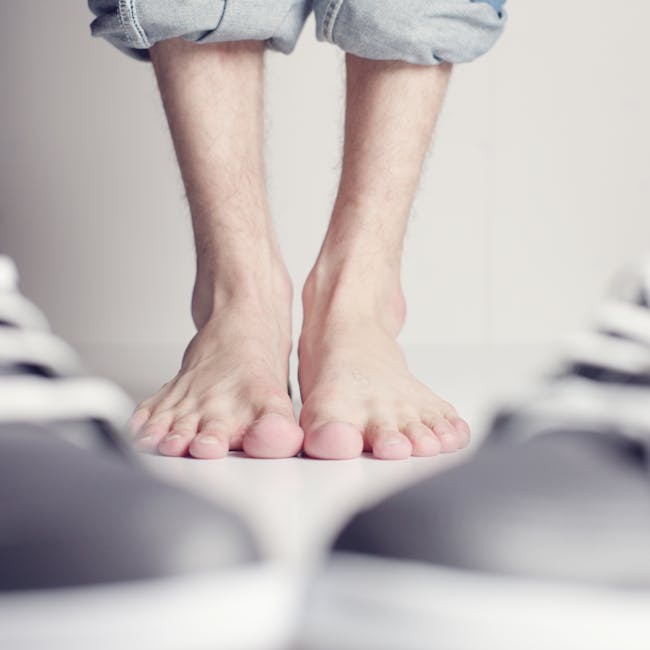: 10 Mistakes that Most People Make
 Foot Pain: What It Is, Why It Happens, and How to Fix It
Foot Pain: What It Is, Why It Happens, and How to Fix It
Many people experience foot pain at some point in their lives, regardless of how old they are, what they do, or who they are. There are many possible reasons for foot pain, and it can involve different areas of the foot, such as the sole, arch, heel, or toes. The pain can vary from mild to intense, and it may last for a short time or a long time. In this article, we will look at some of the usual types of foot pain, what causes them, and how to deal with them. Click here to get even more info on the subject! View here for more info on this product.
Categories of Foot Pain
There are many types of foot pain that can affect different parts of the foot. Some of the most common types are:
Heel pain: This is when you feel pain at the back or bottom of your heel. It can happen because of different problems such as plantar fasciitis (swelling of the tissue that links the heel bone and the toes), heel spurs (bone spurs on the heel bone), Achilles tendinitis (swelling of the tendon that joins the calf muscles and the heel bone), or bursitis (swelling of the sacs filled with fluid that protect the joints). Arthritis foot pain: This is the pain that occurs due to inflammation and degeneration of the joints in the foot. There are different types of arthritis that can affect the foot, such as osteoarthritis (wear-and-tear arthritis), rheumatoid arthritis (autoimmune arthritis), psoriatic arthritis (arthritis associated with psoriasis), or gout (arthritis caused by uric acid crystals).
Gout foot pain: This is a special type of arthritis foot pain that occurs when uric acid crystals gather in the joints, especially the big toe. Uric acid is a waste product that is normally flushed out by the kidneys, but sometimes it increases in the blood and forms crystals. Gout can cause sudden and severe bouts of pain, swelling, redness, and warmth in the affected joint. Gout can be acute (short-lived) or chronic (ongoing). Click here to learn more about this service! This homepage has all the info.
Sources of Foot Pain
There are various sources of foot pain, depending on the category of pain and the region of the foot that is impacted. Click here for more helpful tips on these companies.
Some of the typical sources are:
Wearing shoes that do not fit well or are too tight, too loose, too high, or too flat. This can cause pressure, friction, or injury to the foot. Having an injury to the foot, such as a sprain, fracture, or puncture wound. This can cause pain, swelling, bruising, or infection in the foot. Having a medical condition that affects the nerves, blood vessels, bones, joints, or muscles of the foot, such as diabetes, peripheral artery disease (PAD), peripheral neuropathy, osteoporosis, or cancer. This can cause pain, numbness, tingling, coldness, weakness, or deformity in the foot.
Having an infection or inflammation in the skin or nails of the foot, such as athlete’s foot (fungal infection), ingrown toenail (nail growing into the skin), warts (viral infection), or corns and calluses (thickened skin). This can cause pain, irritation, heat, or infection in the foot. This website has all you need to learn more about this topic. Here’s the link to discover more about this now!
Remedies for Foot Pain
Foot pain can be treated in different ways, depending on the cause and severity of the pain. Some of the typical remedies are:
Physiotherapy: This is a kind of therapy that involves exercises, stretches, massages, or other methods to improve the movement and flexibility of the foot. Physiotherapy can help with different kinds of foot pain, such as heel pain, arthritis foot pain, or gout foot pain. Physiotherapy can also help avoid or lower the chance of future foot issues. Medication: This is a kind of treatment that involves using drugs to ease the pain, swelling, or infection in the foot. Medication can be taken by mouth, on the skin, or injected into the joint. Medication can help with different kinds of foot pain, such as heel pain, arthritis foot pain, or gout foot pain. However, medication may have side effects or interactions with other drugs. Just click here and check it out! Click here for more helpful tips on this company.
Surgery: This is a kind of treatment that involves operating on the foot to fix or remove injured tissue, bone, or joint. Surgery can help with different kinds of foot pain that do not improve with other treatments, such as heel spurs, ingrown toenails, bunions (bone spurs on the side of the big toe), hammertoes (toes that bend downward), or neuromas (nerve growths). However, surgery may have risks or complications such as bleeding, infection, scarring, or nerve damage. This page has all the info you need. You can read more about the subject here!
 9 Approval and also Commitment Therapy Books to Check Out in 2023
9 Approval and also Commitment Therapy Books to Check Out in 2023 Maximizing Your Productivity: The Must-Have Office Gear for Enhanced Efficiency and Organization
Maximizing Your Productivity: The Must-Have Office Gear for Enhanced Efficiency and Organization Fun Loss Party Gamings
Fun Loss Party Gamings
 Why Do Some People Have Yellow Feet?
Why Do Some People Have Yellow Feet? Understanding Anxiety Medication
Understanding Anxiety Medication The basics on How to Start a Pharmaceutical Company
The basics on How to Start a Pharmaceutical Company